Natural Medicine for Asthma: Natural Remedies and Treatments
What natural remedies and treatments have evidence for helping manage asthma? Learn about the research on exercise, breathing exercises, yoga, and turmeric supplements.
Exercise as a Natural Asthma Treatment
Among the natural and complementary treatments for asthma, exercise stands out as the intervention with the most high-quality evidence to support its effectiveness. While exercise can sometimes trigger asthma symptoms, known as exercise-induced bronchoconstriction, research shows that regular exercise when done safely can actually help improve asthma control.
A study published in Scientific Reports in 2019 found that a 24-week exercise plan involving aerobic exercise, strength-training, and stretching helped improve asthma control and reduce shortness of breath in people with mild to moderate asthma. Another study in the Journal of Allergy and Clinical Immunology in 2020 discovered that exercise helped improve asthma control compared to breathing exercises in those with moderate to severe asthma.
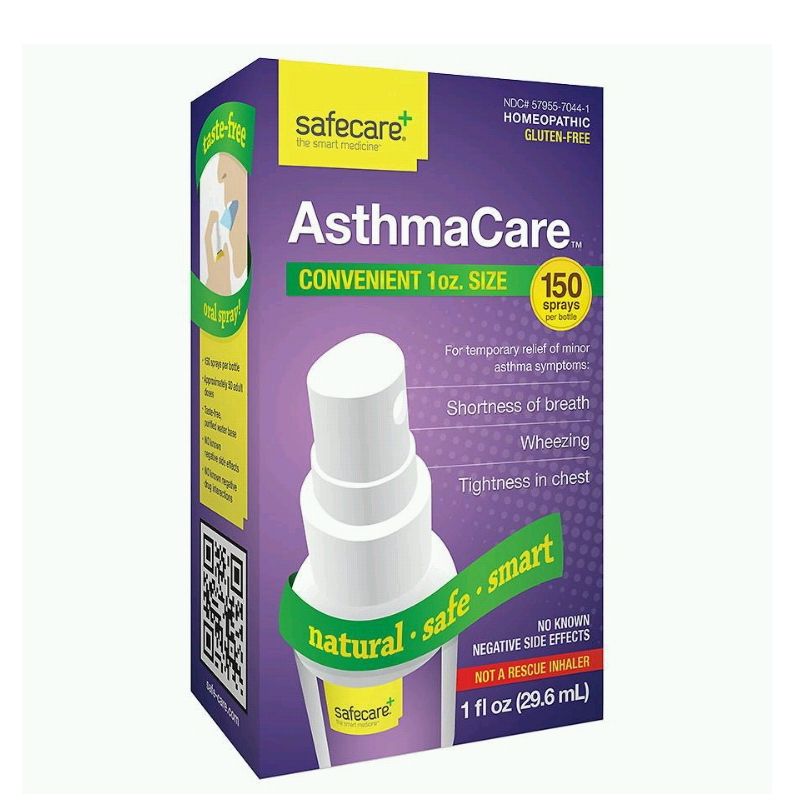
However, it’s important to consult with your doctor before starting any exercise regimen to avoid triggering asthma symptoms. Your doctor may recommend using medications to help prevent attacks. It’s also best to avoid outdoor exercise on days when air quality is poor.
Breathing Exercises for Asthma
There are various breathing techniques, including the Papworth method, Buteyko technique, yoga breathing, and deep diaphragmatic breathing, that tend to focus on controlled nasal breathing. Do these breathing exercises actually help people with asthma?
According to a meta-analysis published in Cochrane Database of Systematic Reviews, moderate to very low certainty evidence suggests that breathing exercises can improve lung function, symptoms related to hyperventilation, and overall quality of life for people with asthma. A study in the Indian Journal of Pediatrics also found that breathing exercises may benefit children with chronic mild to moderate asthma or uncontrolled asthma, though they are less likely to help those with acute severe asthma.
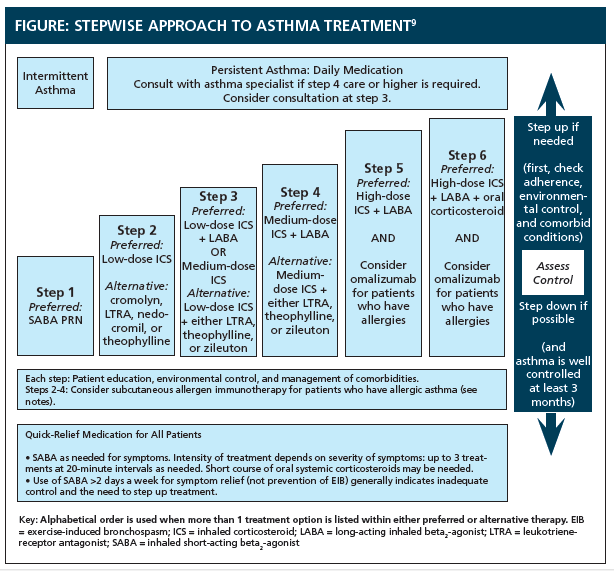
More research is still needed before doctors can routinely recommend breathing exercises as a standard treatment for asthma. But if your doctor approves, you can try some of the techniques outlined by the Global Allergy and Airways Patient Platform.
Yoga as a Natural Asthma Treatment
Yoga, which often incorporates deep breathing techniques, may provide some benefits for people with asthma, though the research is not as strong as for exercise. The primary benefits of yoga seem to be in improving quality of life, rather than directly impacting lung function or reducing asthma exacerbation rates.
A small study published in Ayu found that participants with mild to moderate persistent asthma reported improved quality of life after practicing yoga for 30 minutes per day, 5 days per week, for 6 months. And a review in the Cochrane Database of Systematic Reviews found moderate-quality evidence that yoga can yield slight improvements in quality of life and symptoms for people with asthma.
While the research on yoga’s direct impact on asthma is limited, the practice may still be worthwhile given its other health benefits and low risk, according to experts.
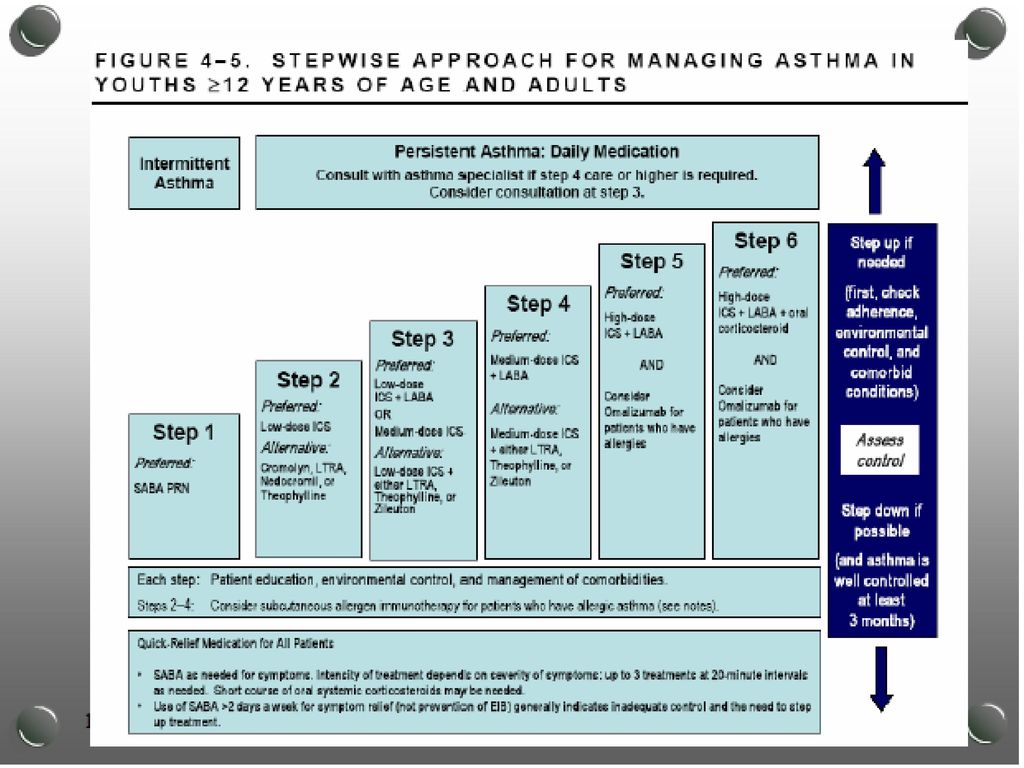
Turmeric Supplements for Asthma
Turmeric, a spice commonly found in curry and other Indian and Middle Eastern dishes, is often promoted as a potential natural remedy for asthma due to the anti-inflammatory and antioxidant properties of its active ingredient, curcumin. But does the research support this claim?
The evidence is somewhat mixed. Some studies have found that turmeric and curcumin supplements may have modest benefits for asthma, such as reducing inflammation and improving lung function. However, other research has not found a significant effect on asthma symptoms or control.
More high-quality, larger-scale studies are needed to definitively determine the effectiveness of turmeric supplements for asthma management. But for now, the existing evidence suggests turmeric may have some potential as a natural complement to standard asthma treatments, though its benefits are limited compared to interventions like exercise.
Risks and Considerations for Natural Asthma Remedies
While natural and complementary treatments for asthma can be worth exploring, it’s important to discuss any new therapies with your healthcare provider before trying them. Some natural remedies may interact with asthma medications or have other health risks.
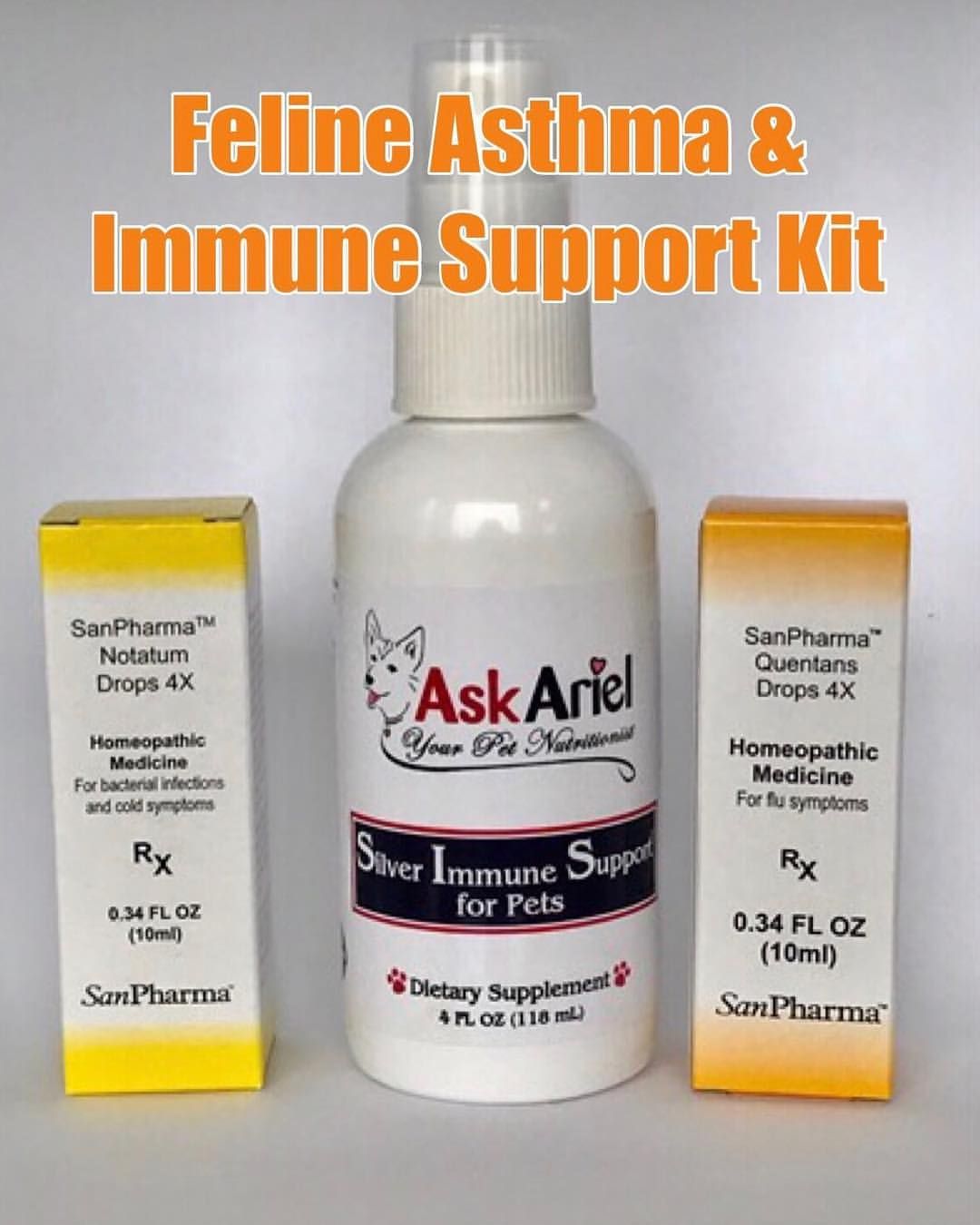
Additionally, it’s crucial to continue using any prescribed asthma medications as directed, even if you decide to try natural treatments. Natural remedies should be used as a complement to, not a replacement for, standard medical care for asthma.
The Bottom Line on Natural Asthma Treatments
Among the natural and complementary treatments for asthma, exercise stands out as the intervention with the strongest evidence of effectiveness. Breathing exercises and yoga may also provide some benefits, particularly for quality of life, though more research is needed.
The evidence on turmeric supplements for asthma is more limited, but they may have modest benefits as a natural complement to standard treatments. Overall, natural remedies can be worth trying under the guidance of your healthcare provider, but should not replace prescribed asthma medications and professional medical care.
Conclusion
In conclusion, while natural and complementary treatments for asthma show some promise, the strongest evidence supports the use of regular exercise as a natural way to help manage asthma symptoms and improve overall asthma control. Other interventions like breathing exercises, yoga, and turmeric supplements may provide additional benefits, but require more research to fully understand their effectiveness. As with any new therapy, it’s crucial to discuss natural asthma remedies with your healthcare provider before trying them, to ensure they are safe and appropriate for your individual needs.

Natural Remedy Options for Asthma Treatment
Which Complementary Treatments for Asthma Have Evidence to Show They Work?
When it comes to natural and complementary treatment approaches for asthma with high-quality evidence to back up their use, exercise stands out as the intervention with the most data behind it. Although, per the American Lung Association, exercise can sometimes trigger asthma symptoms (known as exercise-induced bronchoconstriction), research has shown regular exercise when done safely can help improve asthma control, too.
“If we look at exercise training, there’s strong evidence that it improves cardiovascular fitness, and that it improves quality of life,” says David G. Hill, MD, the director of clinical research at Waterbury Pulmonary Associates in Connecticut and a member of the American Lung Association’s national board of directors.
A trial published in August 2019 in Scientific Reports found that for mild to moderate asthma, a 24-week exercise plan involving aerobic exercise for at least 30 minutes three times a week, plus strength-training and stretching, helped improve asthma control and reduced shortness of breath.
In another trial, published in October 2020 in the Journal of Allergy and Clinical Immunology, researchers found exercise helped improve asthma control when compared with breathing exercises among people with moderate to severe asthma.
Be sure to consult your doctor before beginning any exercise regimen to avoid exercise-induced asthma, says Dr. Wright. “Your doctor may recommend medications to help prevent attacks,” she says. And stop any activity if you become short of breath, begin to cough, or start to feel pain or tightening in your chest, states the American Lung Association.
On days when the air quality outdoors is unhealthy, it’s best not to break a sweat outside, the American Lung Association says.
Complementary Therapies for Asthma With Limited Evidence
The following four treatments have some promising research to support their use, but experts say more evidence is needed to conclusively say where they fit into asthma management.
Breathing Exercises
There are a number of different breathing techniques, including the Papworth method, the Buteyko technique, yoga breathing, and deep diaphragmatic breathing, all of which tend to focus on controlled nasal breathing. Can they help people with asthma?
Some evidence suggests breathing exercises may benefit people with asthma, says Hill. According to a meta-analysis published in March 2020 in Cochrane Database of Systematic Reviews, moderate to very low certainty evidence suggests that breathing exercises improve lung function, symptoms related to hyperventilation — breathing that is heavier and quicker than normal — and overall quality of life for people with asthma.
A study published in October 2018 in the Indian Journal of Pediatrics suggests that breathing exercises may also help children with chronic mild to moderate asthma or uncontrolled asthma, but are less likely to help those with acute severe asthma./a-young-man-is-using-an-asthma-inhaler-924327182-5aff16fe119fa8003717596c.jpg) Researchers note that more research is needed before doctors can recommend breathing exercises as a standard treatment for children with asthma.
Researchers note that more research is needed before doctors can recommend breathing exercises as a standard treatment for children with asthma.
If your doctor gives you the go-ahead to try breathing exercises, the Global Allergy and Airways Patient Platform outlines some techniques you can try for asthma.
Yoga
Yoga — a mind-body practice that often incorporates deep breathing techniques — may benefit people with asthma in some ways, but not others, says Hill.
“The benefits of yoga for asthma are primarily based on the breathing exercise functions of yoga,” Hill explains. “But mainly, the data for breathing exercises and for yoga show quality-of-life improvement, but not anything that we can measure in terms of improvement in lung function or decrease in exacerbation rates,” he adds.
In a small study published in the January–June 2017 issue of Ayu, participants with mild to moderate persistent asthma reported their quality of life improved when they practiced yoga 30 minutes a day, five days a week, for six months.
And in a review article published in April 2016 in the Cochrane Database of Systematic Reviews, researchers found moderate-quality evidence that yoga could yield slight improvements in quality of life and symptoms in people with asthma.
Wright says even though some studies haven’t proved one way or the other the effect of yoga on asthma symptoms, the practice may still be worthwhile for people with asthma given that there are other benefits for health and few risks.
Turmeric Supplements
Turmeric, a spice commonly found in curry and other Indian and Middle Eastern dishes, is often touted as a potential natural remedy for asthma because of the anti-inflammatory and antioxidant properties of curcumin — the active ingredient in turmeric.
Does this belief hold up in scientific studies? Somewhat, but not entirely, says Hill, who adds that the evidence for using turmeric for asthma is limited thus far. “There are some studies showing benefit, but there are some studies showing no benefit, and the studies tend to have small numbers of patients, different varieties of dosages, and different outcome measurements,” Hill explains.
A study published in the Journal of Clinical and Diagnostic Research found that adults with asthma who complemented their usual asthma treatment with 500 milligrams of curcumin per day for a month experienced improvements in their asthma symptoms. The authors of the study said further research with more participants, higher doses, and longer-term use is still needed — so, these supplements for asthma aren’t quite ready for prime time.
RELATED: Can Turmeric Help Asthma?
Magnesium Supplements
The case of magnesium is interesting when it comes to asthma, says Hill, who says intravenous magnesium is often administered by health professionals for cases of severe asthma in hospital emergency rooms. But, Hill adds, there’s not much evidence that long-term use of magnesium supplements taken by mouth helps people with asthma.
According to a systematic review and meta-analysis in the February 2019 NPJ Primary Care and Respiratory Medicine, people with mild to moderate asthma who took magnesium supplements orally showed some improvements in their FEV1 — a measurement of how much air someone can exhale when forcing a breath — but this effect didn’t last beyond eight weeks of taking the supplements.
Aside from this, magnesium supplements weren’t found to offer any other benefits for asthma, and can’t yet be recommended as an add-on treatment for people with asthma, according to the researchers. Wright agrees, saying more research is needed before she would recommend this approach to patients.
Massage
Some data points to possible benefits of massage for children with asthma, says Hill. Wright explains that the existing studies on massage and asthma are limited, and don’t yet support its widespread use.
According to a systematic review and meta-analysis published in Evidence-Based Complementary and Alternative Medicine in May 2017, massage appeared to improve asthma symptoms and lung function in children with asthma, but the researchers noted more studies are still needed to confirm these benefits.
RELATED: How to Use Your Body’s Pressure Points to Relieve Asthma
Natural Remedies Lacking Evidence to Show They Help With Asthma
There are many other natural remedies that some people with asthma swear by, but which science doesn’t support. Some include:
Some include:
Herbal medicines A number of herbs or herbal supplements have been touted as natural remedies for asthma, but according to Hill, there’s no strong evidence of their benefit for people with asthma. “I, as a provider, would not be telling my patients to try any specific herbal supplements,” Hill says.
Vitamin C (ascorbic acid) No solid evidence supports using vitamin C for asthma, says Hill. Wright agrees, noting that more studies are needed before doctors should recommend this approach.
Warm steam baths While warm steam baths have often been used to help alleviate nasal congestion and airway irritation associated with asthma, Peters points out there’s never been a study that proves steam treatments help asthma symptoms. She also cautions that steam can be dangerously hot. “In some asthmatics, it can [actually] exacerbate symptoms,” she says.
Chiropractic work According to the Mayo Clinic, the most thorough research rejects the idea that chiropractic work can be an effective asthma treatment.
Essential oils Human-based studies in support of essential oils are lacking, and essential oils may even be trigger allergic reactions. “I would be careful with taking essential oils, as these can often be irritating rather than soothing,” says Cassidy Gundersen, PhD, a nutrition consultant and health coach based in Salt Lake City.
RELATED: What People With Asthma Should Know About Using Essential Oils
Apple cider vinegar Albeit popular, apple cider vinegar doesn’t hold up scientifically as an option to treat asthma, according to Hill.
RELATED: What People With Asthma Should Know About Apple Cider Vinegar
Tea Scientific support isn’t conclusive on any specific benefits of tea-drinking for asthma, but Hill agrees there’s likely no harm in sipping your daily cup. If you’re going to brew your own tea using tea leaves, be wary of “tea maker’s asthma,” says Hill. “Certainly, exposure to tea leaves in large quantities can trigger asthma,” he adds.
“Certainly, exposure to tea leaves in large quantities can trigger asthma,” he adds.
RELATED: Can Drinking Tea Help With Asthma Symptoms?
The Bottom Line: Are Natural Remedies Safe for People With Asthma?
Peters points out that just because studies haven’t established a definite benefit doesn’t mean that some of these won’t help some people. Each individual may react differently, and what works for some people with asthma may not work for others. But until many of these complementary and alternative options have stronger scientific evidence to back up their role, they can’t be recommended on a large scale to people with asthma, says Hill.
So, if you see something marketed as a natural remedy for asthma, approach it with caution, and don’t make changes to your asthma action plan without discussing it with your doctor first.
Additional reporting by Moira Lawler and Christina Vogt.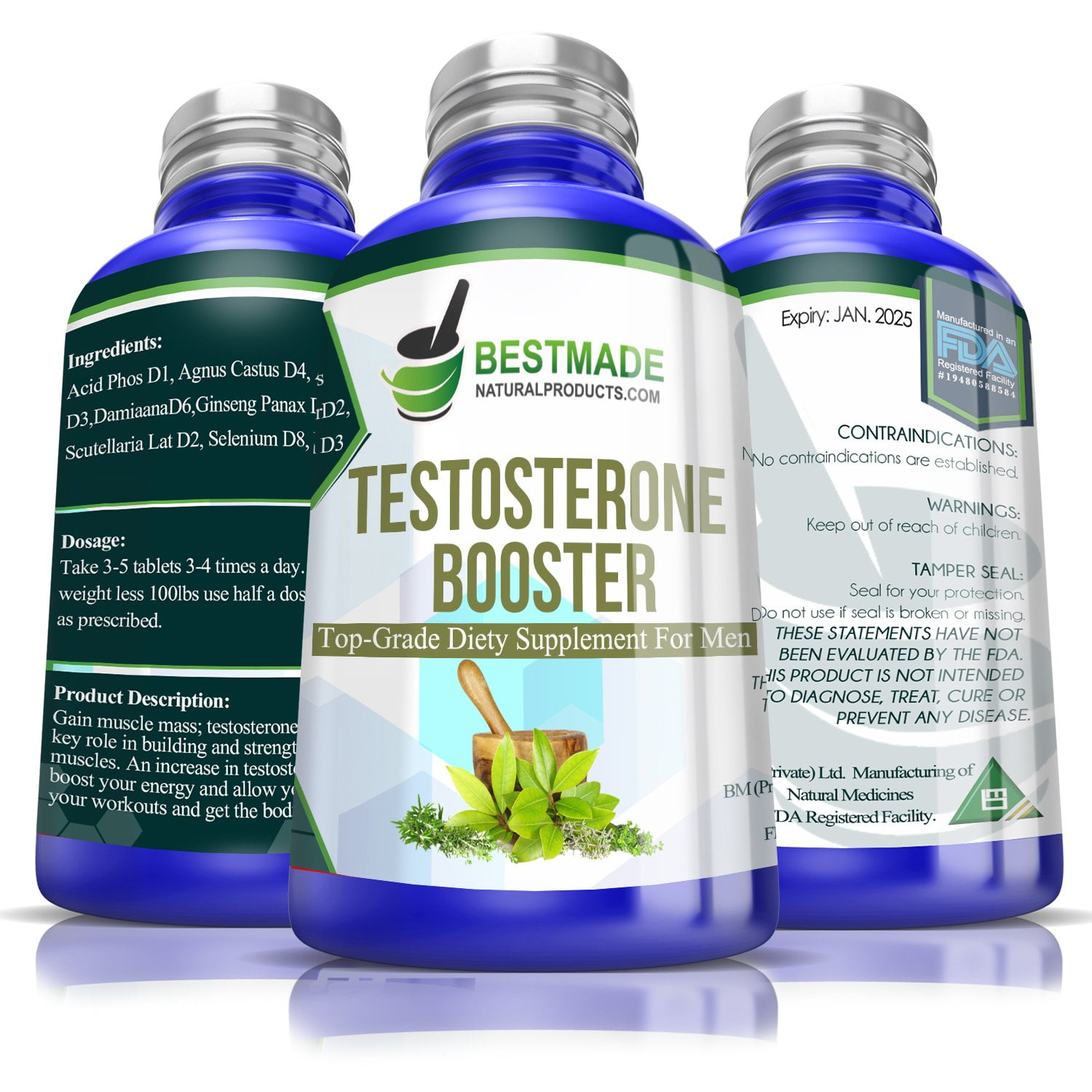
Asthma treatment: Do complementary and alternative approaches work?
Complementary and alternative medicine (CAM) asthma treatments range from breathing exercises to herbal remedies. However, a lack of well-designed clinical trials makes it difficult to determine the safety and effectiveness of these treatments.
A recent survey of allergists found that most people who used CAM did so because they thought the treatments were safer than traditional medicines. Yet, the doctors observed a link between greater CAM use and increased symptom flares and emergency room visits.
If you’re considering CAM treatments for asthma, here’s what you should know.
Acupuncture
During acupuncture, the practitioner inserts very thin needles into your skin at specific points on your body.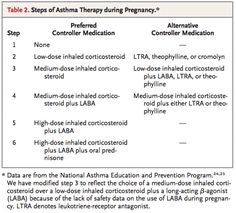 There is little evidence to support this therapy as an effective asthma treatment. Several uncontrolled studies have been done, with mixed or disappointing results. Some research suggests that acupuncture may reduce the need for inhaled steroids, particularly in children, but more definitive studies are needed. If you decide to try acupuncture, work with an experienced, licensed acupuncturist, preferably one who is also a medical doctor.
There is little evidence to support this therapy as an effective asthma treatment. Several uncontrolled studies have been done, with mixed or disappointing results. Some research suggests that acupuncture may reduce the need for inhaled steroids, particularly in children, but more definitive studies are needed. If you decide to try acupuncture, work with an experienced, licensed acupuncturist, preferably one who is also a medical doctor.
Breathing exercises
Breathing exercises used for asthma include the Buteyko technique, Papworth method and yoga breathing (pranayama). You take slow, deep, even breaths to change your breathing pattern and prevent rapid breathing (hyperventilation). The exercises don’t seem to improve the allergic reaction that triggers asthma symptoms.
A comprehensive review of research on asthma breathing exercises found that the exercises may offer modest benefits, if any. Additional research is necessary to confirm their effectiveness. However, breathing exercises are easy to do and may help you relax. Some people who have tried them said they felt better.
However, breathing exercises are easy to do and may help you relax. Some people who have tried them said they felt better.
Chiropractic manipulation
A few studies have hinted that spinal manipulation may help reduce the number of asthma attacks and the need for medication, particularly in children. However, a comprehensive review of chiropractic asthma studies found there is not enough evidence to support its use as an effective asthma treatment.
Diet, vitamins and supplements
A nutritious diet helps you stay healthy. And, more and more studies show that certain vitamins and nutrients found in foods may help relieve asthma symptoms in some people. Three that seem promising include:
- Antioxidants. People with severe asthma appear to have lower levels of these protective nutrients found in fruits and vegetables. Hospitals commonly give people the antioxidant magnesium through a vein for severe asthma attacks. Studies have hinted that eating foods rich in the antioxidants vitamin C and E may ease asthma symptoms, but a recent, well-conducted review shows they do not.

- Omega-3 fatty acids. These healthy oils found in several types of fish may reduce the inflammation that leads to asthma symptoms. Small studies suggest fish oil supplements also offer a modest benefit. It’s unclear whether omega-3s from flaxseed and canola oil have the same beneficial effects as omega-3s found in fish. Omega-3s also appear to have a number of other health benefits.
- Vitamin D. Some people with severe asthma have low levels of vitamin D. Researchers are exploring whether vitamin D may reduce asthma symptoms in some people. Ask a doctor how much vitamin D is best. Too much can cause kidney damage.
A multivitamin or supplement pill may help you get nutrients, but the best way to make sure you’re getting proper nutrition is to eat a varied diet rich in fresh, unprocessed foods. There’s no downside to increasing your intake of fruits and vegetables and foods rich in omega-3 fatty acids, such as cold-water fish, nuts, greens and ground flaxseed.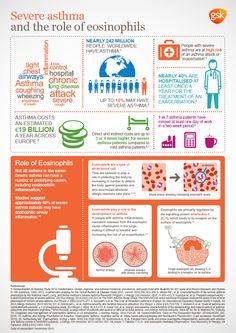
Herbal remedies
Herbal remedies have been used for thousands of years to treat lung problems in Asia. Some have shown promise in research, but more studies are needed. Traditional Chinese, Indian and Japanese medicines usually involve using blends of herbs. Taking certain herbs in combination may be more effective than taking only one herb.
Use caution with herbal remedies and always discuss the use of herbs or dietary supplements with your doctor. Consider these concerns before taking any herbal remedy:
- Quality and dose. There are usually no quality control standards for herbal remedies. The remedies may vary in quality and strength. The product you buy may contain ingredients that aren’t listed, or the product may be contaminated. Herbal remedies imported from developing countries have a high risk of being contaminated, which can be dangerous to your health.
- Side effects. Side effects caused by herbal remedies can range from minor to severe.
 It depends on the herb and dose you take. Be especially careful with herbs and supplements that contain ephedra or ephedra-like substances. These can cause dangerous spikes in blood pressure and have been linked to heart attack and stroke. Examples include ma-huang (banned in the United States) and bitter orange.
It depends on the herb and dose you take. Be especially careful with herbs and supplements that contain ephedra or ephedra-like substances. These can cause dangerous spikes in blood pressure and have been linked to heart attack and stroke. Examples include ma-huang (banned in the United States) and bitter orange. - Drug interactions. Certain herbal remedies can interact with other medications.
These concerns don’t necessarily mean trying an herbal treatment is a bad idea — you just need to be careful. Talk to your doctor before taking an herbal remedy to make sure it’s safe for you.
Massage
Studies hint that massage may help children with asthma breathe easier. A recent, well-controlled trial found that children who received a gentle, 20-minute bedtime back rub by a parent had greatly improved lung function after five weeks. Massage for asthma treatment seemed to work best in children ages 4 to 8 than in children ages 9 to 14.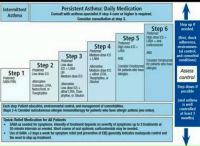
Relaxation techniques
Relaxation therapy helps lower blood pressure and slow breathing. Techniques include meditation, biofeedback, hypnosis and progressive muscle relaxation (Alexander technique). Doctors aren’t sure if relaxation therapy directly helps improve asthma symptoms. However, relaxation therapy can help reduce stress, which can improve your overall health.
Consider the evidence and safety
More well-designed studies are needed before researchers can make a clear judgment about which complementary and alternative asthma therapies are likely to help. Talk to your doctor before trying any complementary or alternative asthma treatments, and don’t stop prescribed medications or other medical treatment.
Sept. 24, 2020
Show references
- Kalaci O, et al. Complementary and alternative medicine use in children with asthma. Complementary Therapies in Clinical Practice. 2019; doi:10.1016/j.ctcp.2019.02.017.
- Rakel D, ed.
 Asthma. In: Integrative Medicine. 4th ed. Elsevier; 2018. https://www.clinicalkey.com. Accessed Sept. 18, 2020.
Asthma. In: Integrative Medicine. 4th ed. Elsevier; 2018. https://www.clinicalkey.com. Accessed Sept. 18, 2020. - Martin RJ. Complementary, alternative, and integrative therapies for asthma. https://www.uptodate.com/contents/search. Accessed Aug. 27, 2020.
See more In-depth
Products and Services
- Book: Mayo Clinic Book of Home Remedies
.
3 Natural, Drug-Free Ways to Treat Asthma : Richard Firshein, D.O.: Integrative Medicine
If you’ve ever had an asthma attack, you know they can be terrifying experiences. Your chest may tighten, you may struggle to breathe, and you may become anxious and begin to hyperventilate. I should know; 30 years ago I experienced a life threatening asthma attack which landed me in the ICU. That experience led me to write Reversing Asthma which chronicled my recovery and the natural approaches I used and still recommend to my patients.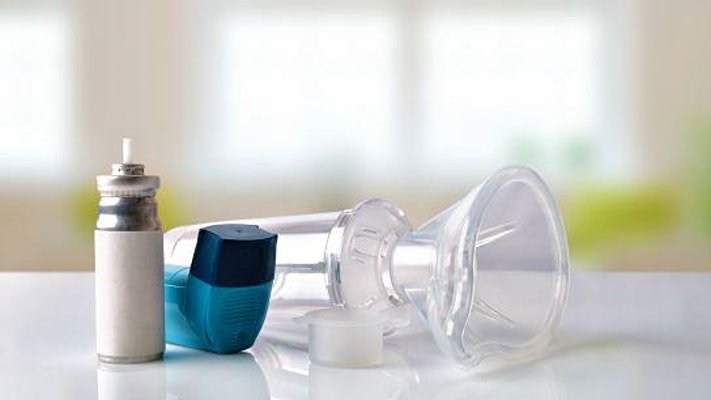
Even if you don’t have severe asthma that leads to asthma attacks, the symptoms of mild asthma are inconvenient and annoying. With persistent asthma, you may experience occasional shortness of breath, chest tightness, and coughing or wheezing. At the Firshein Center in New York City, we can help you overcome asthma symptoms and restore your quality of life.
Most patients with severe asthma need medical treatments such as bronchodilators (medications that relax your airways). However, natural remedies can complement medications if you have severe asthma; and if you have mild asthma, natural remedies may replace medications altogether. Some of the natural approaches taken at the Fishein Center include supplements such as magnesium, Vit C, and Fish oils. Other approaches include specific exercises that are derived from mindful meditations that Buddhist monks use, as well as breathing exercises.
Breathing exercises
Some research suggests that practicing mindful breathing can ward off asthma attacks and decrease asthma symptoms.
One approach, that the Firshein Center uses is a technique that slow down breathing combined with diaphragmatic exercises. The Firshein method utilizes slow breathing with visual imagery and diaphragmatic breathing to maximize their approach to enhanced respiration. Some research links higher carbon dioxide content in the blood to more dilated airways.
Many other breathing techniques for asthma exist, and Dr. Firshein can teach you the best exercises for your asthma.
Nutritional counseling
In his books the Nutraceutical Revolution and Reversing Asthma, Dr. Firshein documents the benefits of using specific nutrients to benefit his patients. Studies show that diets rich in vitamin C, antioxidants, anti-inflammatory foods, and other minerals reduce your risk of asthma. Foods with anti-inflammatory properties — such as berries, fish, avocadoes, and herbal teas — may reduce inflammation in your airways, which can minimize symptoms and lower your risk for an asthma attack.
Eating a healthy diet also strengthens your immune system, which helps your body fend off allergy attacks and illness, two common triggers of asthma.
Trigger avoidance
Avoiding triggers is critical to avoiding asthma attacks. Common asthma triggers include:
- Smoke
- Allergen exposure (animal dander, pollen, dust, mold)
- Strong scents (fragrances in soaps, perfumes, and colognes)
- Rapid changes in weather (hot to cold, humid to dry)
- Illness, such as a cold
- Exercise
While we don’t recommend avoiding exercise completely, take care to monitor your breathing during exercise. Slow down or back off the intensity if you start struggling to breathe, and only exercise in places where your other triggers aren’t present. Also pulsed exercise which uses intermittent on off cycling of intense exercises cab benefit recovery
You should take care to avoid the other triggers on this list to the best of your ability. Definitely don’t smoke, or quit smoking, if you have asthma. Keep your living space clean and free of dust, dust mites, and mold. Don’t wear perfume or cologne; use fragrance-free dish soaps, cleaning products, and body wash; and ask the people you live with to do the same.
Use your air conditioner — it cycles air throughout your home so allergens and dirt don’t build up as easily. Use a humidifier or dehumidifier if you live in a climate without ideal humidity. But Hepa filtration systems are the most effective way to reduce pollution the home
Do your best to keep your immune system strong: Get plenty of sleep, drink lots of water, and eat a healthy diet full of antioxidant- and anti-inflammatory-rich foods.
Create an asthma action plan
Dr. Firshein knows and understands the causes, symptoms, and risk factors for asthma, as documented in his two books: Reversing Asthma and Your Asthma-Free Child.
Dr. Firshein will work with you to create a treatment plan based on your symptoms and triggers, as well as the severity of your asthma. Your treatment should be flexible, and it can change based on fluctuations in your symptoms.
Call Dr. Firshein or request an appointment online to schedule a consultation. When you come to see Dr. Firshein, make sure to bring a list of your symptoms and triggers so he can best assist you.
7 Ways to Ease Asthma Naturally
Last Updated: December 19, 2019
Was this helpful?
536
Breathe Easier with Natural Remedies
Asthma affects more than 24 million people in the United States and many traditional treatments focus on using medication to relieve symptoms after an asthma attack has begun. However, preventing the triggers that cause asthma is often the best approach. That’s where alternative and complementary treatment options come in. Using a natural method of prevention in conjunction with a traditional treatment may be the secret to easing asthma all around. Discover some fresh techniques.
1. Meditation and Yoga
Stress is a key trigger for asthma attacks and a regular yoga or meditation practice can help you learn breathing techniques to reduce stress on the spot. The slow, deep breathing used during mediation and yoga is geared towards relaxation and reducing hyperventilation. Another technique called Buteyko breathing features a schedule of regular exercises to retrain your breathing and prevent attacks.
2. Acupuncture
Acupuncture is an ancient alternative therapy that involves inserting tiny needles into the skin at certain points to balance your body’s energy. Though studies have not been able to prove the effectiveness, there is some belief that this method can help ease asthma symptoms. This therapy often incorporates relaxation and meditative breathing, so at the very least that aspect of the treatment might be a benefit.
3. Biofeedback
Biofeedback is an approach that uses electronic monitoring devices to help you learn how to manage your body’s physical responses. For example, you might monitor your heart rate and discover ways to keep it controlled at a moderate pace. Studies have shown that this method can affect heart rate variability and help asthma patients improve airway flow and lung function. Plus, it’s another indicator that relaxation may play a big part in naturally preventing asthma attacks.
4. Steam Bath
Just the idea of a steam bath will probably make you feel better, but this natural treatment is one of the simplest ways to potentially ease asthma symptoms. Warm steam is a common remedy for opening airways when people are suffering from a common cold. While this isn’t a cure, it might be a soothing quick fix when asthma symptoms pop up. Just be careful that the steam isn’t too hot. Excessive heat can sometimes make symptoms worse.
5. Diet
Unfortunately there’s no magic diet to prevent and relieve asthma symptoms, but food allergies sometimes trigger asthma and a diet update can bring relief. Everyone is different, so it’s worth working with a dietician to find a diet that is right for your body. Some common dietary changes that benefit asthma sufferers include increased vitamin C and D, avoiding sulfites and eating fruits and vegetables that are packed with antioxidants. Also, maintaining a healthy weight helps reduce symptoms.
6. Garlic and Ginger
Many doctors are wary of incorporating herbs into asthma treatment because they may cause side effects or interact poorly with your medication. That said, foods that you eat every day might be a safer route to a natural remedy. Ginger and garlic both have anti-inflammatory properties and are commonly used to manage cardiovascular disease. This tasty treatment may also decrease inflammation in the lungs and help prevent or relieve asthma attacks.
7. Omega 3s
Did you think fish oil was just good for cholesterol? It turns out these fatty acids that help prevent heart disease may also decrease airway inflammation and help lung function. If you don’t like taking supplements, eating Omega 3 rich foods like fish, walnuts and flaxseed can do the trick. More research still needs to be done to prove the effectiveness of Omega 3s for asthma treatment, but if you’re keeping your heart healthy in the meantime then it’s a win-win.
7 Ways to Ease Asthma Naturally
Elizabeth has been writing for Healthgrades since 2014 and specializes in articles about alternative and complementary therapies like meditation, yoga, energy work and aromatherapy. She also performs improv comedy and is a firm believer that laughter really is the best medicine.
Was this helpful?
536
Medical Reviewer: William C. Lloyd III, MD, FACS
Last Review Date: 2019 Dec 19
THIS TOOL DOES NOT PROVIDE MEDICAL ADVICE. It is intended for informational purposes only. It is not a substitute for professional medical advice, diagnosis or treatment. Never ignore professional medical advice in seeking treatment because of something you have read on the site. If you think you may have a medical emergency, immediately call your doctor or dial 911.
Top Home Remedies for Asthma: Do They Actually Work?
Living with asthma can be demanding, between recognizing potential asthma attack triggers to managing day-to-day symptoms. Those suffering from asthma are often looking for more tips and solutions beyond their physician’s office to manage their condition.
Many online organizations and forums list different herbs, fruits and other natural substances that are supposed to relieve asthma symptoms, but do some of these actually work? In this post, we take a look at the scientific evidence (if any) behind some of the internet’s most popular “natural” asthma remedies.
What is causing your asthma symptoms?
If you have asthma, you are probably all-too familiar with the symptoms: difficulty breathing, chest tightness, wheezing, shortness of breath, and coughing at night, while laughing, or during exercise. Being exposed to certain triggers can increase the frequency or severity of these symptoms. While everyone’s asthma triggers are different, the CDC lists the following as some of the most common culprits:
- Tobacco smoke and smoke from burning grass or wood
- Dust mites and cockroaches
- Outdoor air pollution
- Animal dander
- Mold and pollen
- Respiratory infections
- Acid reflux
- Physical exercise
- High-humidity weather (such as thunderstorms) and cold, dry air
- Strong emotion that leads to hyperventilation
Most people use quick-relief medications, such as inhalers, to treat asthma attacks. Depending on your symptoms, your doctor may have prescribed regular medication to help reduce daily airway inflammation. In the following section, we take a look at various natural remedies for asthma symptoms. However, it is important to note that these remedies are only meant to complement your current asthma treatment plan. You should not stop taking prescribed asthma medicine without talking with your doctor.
Do natural remedies for asthma symptoms work?
The internet has no shortage of home remedies for allergies, asthma and other illnesses. What there is a shortage of, however, is scientific evidence that backs up the effectiveness of many “natural” asthma treatments. Some of the most popular home remedies for asthma symptoms include:
- Honey — If nighttime coughing from asthma is keeping you up, honey may be able to help. Honey works well as a cough suppressant because it causes increased salivation and airway secretions, according to the UCLA Department of Health. They suggest taking two teaspoons at bedtime – either by the spoonful or mixed with warm water or tea – to help suppress nighttime coughing. However, honey’s role in the treatment of asthma is yet unknown. Aerosolized honey was found to decrease airway inflammation and manage asthma symptoms in rabbits. Still, more research is needed to understand its effects on humans and determine whether it can be used as a viable asthma treatment method (Kamaruzaman et al., 2014).
- Ginger — Many asthma symptoms stem from the tightening of the bronchial tubes that carry air to and from the lungs. Ginger may be able to work with existing asthma medications to help relax the airway muscles and make breathing easier for people with asthma (Townsend et al., 2013). An ongoing study at the Columbia University Asthma Center at the Columbia University Asthma Center hypothesizes that two grams of ginger each day may help reduce airway inflammation and relax the airway muscles.
- Caffeine — Caffeine may help you breathe more easily as one study found that drinking caffeine can moderately improve lung function and open narrow or constricted airways for two to four hours after consumption (Welsh et al., 2010). However, the Asthma and Allergy Foundation of America (AAFA) warns against using caffeine as a regular asthma treatment, as its effects are not as strong or long-lasting as traditional asthma medications. Plus, consuming too much caffeine can cause unwanted side effects, such as insomnia, headaches and shakiness.
- Essential oils — Peppermint, lavender, eucalyptus, clove and rosemary essential oils have been studied for their effects on asthma symptoms. However, the strong fragrances associated with essential oils could trigger an asthma attack for some people. Additionally, National Capital Poison Center warns that essential oils can be toxic if misused and that they should always be kept out of reach of children and pets.
Home remedies that some people have found luck with, but that still need more scientific research, include figs, warm water, lemon juice, mustard seed oil, onions, and garlic. The National Center for Complementary and Integrative Health (NCCIH) has found insufficient scientific evidence to recommend acupuncture, dietary herbs and supplements (such as omega-3 fatty acids, vitamin C, magnesium supplements and butterbur) as viable treatments for asthma.
Home remedies for adults with asthma
The grocery store is not the only place to find natural supplements to your asthma treatment regimen. There are plenty of things that you can do at home to help mitigate your everyday asthma symptoms. For example:
- Keeping an asthma diary can help you learn when and where your asthma symptoms are the most severe. Once you understand your asthma triggers, you can start to be more proactive in managing your symptoms. Plus, your asthma journal can help you communicate with your doctor when making decisions about your treatment.
- Clearing your home of any known allergens and asthma triggers can help reduce symptoms. Try cleaning and vacuuming regularly, closing windows to keep pollen and air pollution out, and making sure that the air in your home doesn’t get too cold or dry. If you are worried about stirring up dust while cleaning, try wearing a dust mask or asking someone else to help.
- Finding new ways to mitigate stress may be a good way to mitigate stress-related asthma symptoms as well. In a large aggregate research, researchers note that stress amplifies the immune response to environmental triggers of asthma. You can seek out common science-backed methods to reduce stress such as exercise, yoga, and meditation.
- Using a saline nasal wash can help some people with asthma symptoms, according to researchers at Birmingham Regional Severe Asthma Services. Many people with asthma also experience allergy symptoms that can exacerbate feelings of breathlessness and chest tightness. Nasal irrigation can help relieve these symptoms. However, if you decide to do a nasal rinse, make sure to familiarize yourself with the FDA’s safety recommendations to avoid infection.
Home remedies for children with asthma
As a parent, you probably want to do anything and everything you can to keep your child’s asthma from interfering with their life. Fortunately, there are some simple steps you can take to help your child manage their asthma symptoms.
- Your child spends around eight hours each night in bed, so asthma triggers there can really aggravate symptoms. You can use zippered dust mite covers for pillows and mattresses to help keep allergens from permeating their bedding. Additionally, washing bedding in hot water once a week can help reduce nighttime allergen exposure.
- Being mindful about outdoor time can help reduce exposure to asthma triggers, such as pollen and industrial pollution. Monitoring the Air Quality Index (AQI) on AirNow can help you decide whether it is a good day for your child to play outside. Any AQI rating above 100 is likely to be unhealthy for children with asthma.
- By teaching your child to recognize their asthma triggers and symptoms, you can help them avoid unwanted respiratory stress. Also, when your child understands their limits, they are less likely to push themselves too hard during physical activity.
- Make sure that your child’s school has an asthma action plan and that all supervisors know how to react if your child starts to show signs of an asthma attack. This includes outlining the specifics of your child’s asthma treatment medicines.
For many people, the key to living an active, happy life with asthma is complimenting their own solutions with their physician’s treatment plan. This typically includes a combination of recognizing and avoiding your triggers, as well as knowing what to do when asthma symptoms start to flare up. If you are looking for more information, seeking out communities of people who live with asthma can be a great source of support and further education.
The Best Home Remedies to Relieve Asthma Naturally
- Home remedies for asthma include breathing exercises, yoga, dietary changes, and natural herbs.
- Breathing exercises like pursed-lip breathing and deep belly breathing help clear stale air from lungs and allow you take in more oxygen.
- To relieve asthma symptoms, you may also want to include more foods that fight inflammation in your diet, like leafy greens, fatty fish, and nuts.
- This article was medically reviewed by Jason R. McKnight, MD, MS, a family medicine physician and clinical assistant professor at Texas A&M College of Medicine.
- Visit Insider’s Health Reference library for more advice.
LoadingSomething is loading.
About 1 in 13 Americans have
asthma
, a disease that causes your airway to narrow, making it harder to breathe. There are several different medications prescribed to treat asthma, but many people also find home remedies like yoga or acupuncture useful as part of their treatment.
There are no home remedies for an asthma attack – you should always stick to your care plan and get medical help if needed. But these home remedies can help ease everyday symptoms like coughing and sleeping issues.
Here are some research-backed methods you can use to help relieve your asthma symptoms.
Breathing exercises for asthma
People with asthma often have different breathing patterns than healthy people – asthmatics may breathe more quickly or have uneven breath lengths. This can lead to stale air building up in your lungs and leaving less room for your diaphragm, the muscle that sits underneath your lungs, to expand and bring in new oxygen.
One way to change this is by using breathing exercises. The goal of breathing exercises is to help you get rid of stale air, take in more fresh oxygen, and train your diaphragm to move normally while you breathe.
Practicing breathing techniques can also help you feel more in control of your breathing, which can be difficult for people with asthma, says Maureen George, PhD, RN, a professor at Columbia School of Nursing who specializes in respiratory disease.
Two of the most common exercises you can use are pursed lip breathing and diaphragmatic or belly breathing.
Pursed lip breathing
Pursed lip breathing can help to slow down your breathing and keep your airways open for longer periods. This allows more oxygen to flow into your lungs in each breath. You can do this by following these steps:
- Breathe in through your nose with your mouth closed while counting to two.
- Purse your lips as if you are going to blow out a match.
- Blow out through pursed lips while counting to four, without forcing the air out.
- Keep breathing like this until your breathing feels easier.
Diaphragmatic or belly breathing
This kind of breathing can help you engage your diaphragm to fully empty your lungs, rather than using your chest muscles for more shallow breathing. You can do this by taking these steps:
- Place one hand on your belly and the other on your chest.
- Breathe in through your nose, feeling your belly rise.
- Breathe out through your mouth for twice as long as your inhale, feeling your belly fall.
- Repeat these steps, trying to keep your chest still and let your belly do the work to rise and fall with each breath.
For both of these exercises, it’s best to practice for 5-10 minutes each day. Try to practice while your breathing is normal, so you will be more comfortable using the exercises when you are feeling short of breath.
Yoga for asthma
Though more research is needed, there is some evidence that yoga can help relieve asthma symptoms. A review of 15 studies published in 2016 in the Cochrane Database of Systematic Reviews found that asthmatics who practiced yoga for as little as two weeks saw modest improvements in their symptoms and their overall quality of life.
This means that while yoga cannot be used as a standalone treatment for asthma, it may be helpful to add it to your treatment regimen. Yoga may offer benefits for several reasons:
- Many yoga classes incorporate breathing exercises like belly breathing, which can help empty your lungs more fully.
- Yoga can help reduce stress, which is a common trigger for asthma.
- Yoga can help improve your posture, which can make breathing easier. This is because slouching forward can make your chest muscles tighten, making it harder to take full breaths.
If you are not used to physical exercise, it may be helpful to keep your inhaler nearby while doing yoga, in case you feel short of breath.
Diet for asthma
While there is no evidence that a specific diet or group of foods prevents or treats asthma, improving your overall health through a healthy diet can have a positive effect.
Asthma is a chronic inflammatory disease, which means that your immune system overreacts to non-harmful substances like pollen in your airways. While an inflammatory reaction can help protect you when a dangerous particle enters your body, it can also cause symptoms like swelling in your airways that can restrict your breathing.
For this reason, it may help asthma symptoms to eat foods that fight inflammation. “I would recommend a whole food diet that is high in antioxidants, live cultures, and omega-3 fatty acids,” George says. This type of diet should include:
- Leafy greens like spinach and kale
- Berries like cherries and raspberries
- Whole grains like oats and brown rice
- Fatty fish like salmon and tuna
- Nuts and beans
- Yogurt, sauerkraut, and other fermented foods
Other foods can make asthma symptoms worse, particularly if you have allergic asthma. Herbs like echinacea and chamomile can set off symptoms because they are members of the ragweed family, which is a common hay fever trigger, George says.
Eating foods that cause gas may also set off symptoms if gas pressure builds up and presses on your diaphragm, which can affect your breathing and make your chest feel tight. For this reason, you may want to avoid gas-producing foods like:
- Onions and garlic
- Beans
- Vegetables like broccoli and cabbage
- Carbonated drinks
Asthma symptoms can also be set off by compounds called sulfites that are found in dried fruits, red wine, and some pickled foods.
Herbal remedies for asthma
Herbs alone cannot treat asthma, but adding natural supplements into your treatment may help relieve your symptoms. But before trying any natural supplement, you should always check with your doctor or asthma specialist.
Two herbal remedies that may help ease asthma symptoms include:
Turmeric
A small study published in 2014 in the Journal of Clinical and Diagnostic Research found that people who took 500mg capsules of turmeric twice per day on top of their usual asthma treatment had less airway obstruction and better airflow from their lungs, compared to people getting only their regular treatment. This may be because turmeric has anti-inflammatory effects.
Honey
Honey has long been used as a remedy for cough, and eating a spoonful of honey may be as effective as taking prescription cough medicine. This may be because honey coats your throat and can have a soothing effect.
A study published in 2007 in the Malaysian Journal of Medical Sciences found that children with asthma who inhaled honey as a mist through a nebulizer saw improvements in wheezing and shortness of breath, and had more productive coughs, but doctors warn that you should not try this at home.
The bottom line
Asthma is a common condition that can cause serious health issues if it isn’t properly treated. If you have asthma, it’s important to have regular checkups with a specialist to create an individualized treatment plan that works for you. Adding home remedies to your routine like breathing exercises or yoga can help make your symptoms better, but always check with your doctor before adding in any new treatment.
Home remedies for asthma – Hindustan Times
With a rise in pollution levels and change in season, asthmatics are affected in a major way. Asthma is a chronic inflammatory lung disease that affects the airways of the lungs and causes a frequent, recurrent cough, sneezing and breathing difficulty.
This is caused by an allergic reaction to air pollution, which causes the airways to swell and thus narrow, leading to difficulties in breathing and a feeling of suffocation. People suffering from asthma know the true value of breathing.
Soy and its products
Peanuts and other nuts
Fish, shrimp, and other shellfish
Eggs
MSG (monosodium glutamate), a food additive primarily found in Chinese food
Here are some natural remedies that reduce the symptoms of this lung disease:
Warm drinks: Hot or warm drinks can help loosen the airways and relieve congestion. So, keep sipping hot green tulsi tea, ginger tea or peppermint tea or infusions.
Note: Avoid milk tea as milk forms more mucus.
Turmeric: Curcumin, turmeric’s main component, is a phytochemical that has anti-allergic properties, which affect the histamine that causes inflammation of bronchioles. Add turmeric to warm water and drink as a decoction.
Ginger: Its anti-inflammatory properties keep the respiratory tract healthy. Ginger works by relaxing the airway muscles, which relieves constriction and provides relief from asthma. Drink ginger tea or simply chew ginger.
Tulsi: Tulsi is an excellent aid in the war against the symptoms of asthma. Make a decoction with tulsi leaves and water, and sip it throughout the day. Or, drink tulsi tea.
Trikatu: This mixture of three herbs (long pepper, black pepper and dry ginger powder), when taken with a teaspoon of honey, can help to clear the airways and promote normal breathing.
Chyawanprash: It is rich in antioxidants that boost immunity and fight the effects of asthma. Use only Chyawanprash made with organic ingredients, and take every day at bedtime.
Warm mustard oil massage: Rub warm mustard oil combined with camphor on the chest. This provides quick relief from symptoms.
From HT Brunch, December 30, 2018
Follow us on twitter.com/HTBrunch
Connect with us on facebook.com/hindustantimesbrunch
90,000 Treatment of bronchial asthma. Healing algorithm in Tyumen, price
The immediate cause of bronchial asthma is a spasm of the bronchi, which interferes with normal breathing and, as a result, an attack occurs. Since the time of Hippocrates, asthma has been inhaled with the smoke of dope herb, which produced a quick local effect, dilating the bronchi. Datura mixed with bleached and sodium nitrate is part of the asthmatin mixture and is available in the form of cigarettes.This is approximately how inhalation of bronchodilator drugs work today.
Until recently, mild forms of asthma were treated with short-acting non-hormonal aerosols (salbutamol, berotek, and others). However, recent studies have shown that if a patient uses more than one can of such a drug per month for a long time, then the risk of dangerous complications in the long term increases significantly. To reduce this likelihood, the issue of prescribing hormonal drugs in small doses, even with mild manifestations of the disease, is now being considered.The prescription of hormones that directly affect many vital functions of the body is a very alarming and dangerous trend.
It should be noted that “standard asthma treatment” is often limited to relieving attacks only. And the fact that in a number of cases it is possible to completely get rid of asthma is not always taken into account by “free” medicine.
Asthma types:
Atopic bronchial asthma occurs as a reaction of the body to allergens: dust, pollen, mold spores, animal hair and others.In some cases, food allergens cause asthma. Asthma can also be triggered by taking certain medications. Most often, this type of pathology is caused by salicylates (aspirin), other non-steroidal anti-inflammatory drugs, therefore this type of asthma is often called drug, or aspirin. If you manage to cope with allergies, then such asthma is quite curable.
Infectious-allergic asthma develops against a background of chronic infection, including the respiratory tract.It can be bronchitis, sinusitis, tonsillitis. Constant inflammation in the bronchi leads to a violation of their sensitivity and “triggers” asthma symptoms. If it is possible to effectively act on the cause of the inflammation of the respiratory tract, then there is a real opportunity to cope with the asthma itself.
Homeopathic treatment.
Examination of patients with bronchial asthma revealed that more than half of them had so-called psychosomatic diseases (eczema, neurodermatitis, chronic colitis, hypertension, allergies).In early childhood, certain relationships in the family were often noted: maternal overprotection, the removal (or absence) of the father, the situation of separation, perceived as a threat to security. Many patients suffering from bronchial asthma show a special subtlety of perception, emotional vulnerability, which they often try to hide.
Homeopathy is an effective method that allows you to simultaneously influence the physical and mental factors in the development of bronchial asthma.A competent homeopathic prescription is impossible without taking into account the characteristics of the patient outlined above. This is very important in the treatment of bronchial asthma in children.
Homeopathic remedies effectively cope with diseases that act as a background for the development of bronchial asthma – bronchitis, tonsillitis, sinusitis, otitis media, other diseases of the upper respiratory tract, various kinds of allergies. The use of homeopathy in most cases allows, if not completely abandoning, then significantly reducing the dose of hormonal and other potent chemical drugs.
We do not propose to completely abandon the medical treatment of bronchial asthma, however, we believe that other drugs that can help with this disease are not used enough. To such means, we primarily include nutrition, breathing techniques, acupuncture, physiotherapy and other general strengthening techniques.
Nutrition for bronchial asthma.
The nature of the diet significantly affects the course of the disease and the frequency of attacks.The generally accepted confirmation of this fact is the Mediterranean diet. People who adhere to this diet have fewer attacks of bronchial asthma, and if there is no disease, then the likelihood of developing asthma is minimal. In this regard, it should be recalled that the time-tested traditional Russian everyday food allows us to solve the same problems as the Mediterranean diet, only taking into account the full adaptation to living conditions, climate and lifestyle of the majority of Russians.
The basis of traditional food in Russia is:
Basic products – bread (traditional – on malt sourdough without yeast), porridge without milk (you can’t spoil porridge only with butter!), Cruciferous vegetables (all types of cabbage, radish, turnip, radish and others), carrots, beets, apples, onions, and garlic, nuts available in our latitudes, seeds, local berries (lingonberries, cranberries, blueberries, strawberries).A moderate consumption of natural meat (including poultry) and fish, dairy products and eggs is recommended. You need to give up in your daily diet from sausages, pates, sausages, smoked meats, pickles and other similar products. Very limited amount of natural sweets!
There are few fried foods in Russian traditional food. Main dishes – vegetable soups, salads, boiled (steamed) cereals and vegetables, fermented foods, baked goods only on special occasions. Dried, and in the season fresh, local herbs are used as spices: dill, whitewash, carrot tops, onions, garlic, some wild plants, horseradish, mustard.A feature is moderate salt intake. Even in fermented foods, thanks to the addition of lingonberries, cranberries and the use of horseradish, the amount of salt is significantly reduced. The main oil is vegetable (linseed, hemp, sunflower, mustard).
The system of fasting and fasting days, which has not yet been fully accepted by the medical community, is of very serious importance.
Possible methods of treating bronchial asthma without the use of drugs.
A highly effective method of treating bronchial asthma is reflexology (acupuncture) .This method allows you to achieve complete disappearance of asthma symptoms.
Hardening (gradual, competent and careful). In some cases, it alone can significantly alleviate the course of the disease.
An effective auxiliary method is chest massage . As a result of the procedures, the mobility of the chest improves, the respiratory muscles relax, and the drainage function of the lungs improves.
Therapeutic exercise for bronchial asthma includes special physical exercises, dosed walking.
Sauna, swimming in the pool reduce the tone of the respiratory muscles, which helps to restore the activity of the disturbed regulatory systems of the body.
Special breathing practices , for example, according to Strelnikova, according to Buteyko, according to Frolov, allow you to get a significant positive result, up to complete remission of the disease.
Hydrotherapy procedures . Among hydrotherapeutic procedures, contrast showers and hydromassage are used.By contributing to the improvement of peripheral blood circulation, these procedures reduce hypoxia, increase metabolic processes, and also improve the functional state of the central nervous system, and reduce the likelihood of bronchospasm.
Halotherapy (Greek hals – salt). Salt aerosols inhibit the reproduction of pathogenic microflora of the respiratory tract, preventing the development of the inflammatory process.
Climatic treatment procedures (dosed walks, air and sun baths, sleeping in the air) form the basis of the spa treatment of bronchial asthma.If the sanatorium is located in a mountainous area, then already in the first days of stay in mid-altitude conditions in patients with bronchial asthma, coughing, asthma attacks stop or significantly decrease, and the number of wheezing in the lungs decreases. The climate of the Crimean peninsula also has a beneficial effect on the course of asthma.
Balneotherapy is an excellent method of treatment for bronchial asthma, preventing the development of the inflammatory process.
Mud therapy .This procedure has antimicrobial and anti-inflammatory effects. It is used as an application of natural mud to the chest and reflex zones.
Well proven in the treatment of bronchial asthma, such a method as kumis treatment .
It should be noted that the connection to the above methods of medicinal herbs and homeopathic treatment significantly increases their effectiveness.
Conclusion .
Bronchial asthma is a serious and dangerous disease that requires significant efforts to cope with it or alleviate the course of the disease. But even more work and faith in oneself are needed in order to get freedom from illness.
We hope that our recommendations will help you find your healing algorithm .
90,000 Russian scientists have developed a drug that suppresses asthma genes | Articles
Scientists have developed a new drug for bronchial asthma.It blocks the formation of genes that provoke this disease. Similar drugs are being developed abroad, but they are very expensive. In the laboratory of the Institute of Immunology of the FMBA of Russia, they received an inexpensive and effective medicine. Bronchial asthma is one of the most common respiratory diseases. It affects up to 7.3% of adult Russians and 11% of children.
Russian scientists decided to apply a new mechanism for the treatment of bronchial asthma. With the help of small molecules of ribonucleic acid (RNA is one of the three main molecules of the cell), they suppressed the production of pro-inflammatory cytokines.That is, genes that contribute to the development of an inflammatory process in the lungs and the appearance of shortness of breath.
This is a new word in the therapy of bronchial asthma. Now the treatment is mostly symptomatic, the effect is achieved in 40-60% of cases, the Institute of Immunology explained to Izvestia. In the world, drugs are being developed that suppress the activity of cytokines. Suppression is carried out using monoclonal antibodies.
– The monoclonal antibody binds to the protein against which it was developed.In our case, with a cytokine. And it does not allow him to show his negative biological effect, – Igor Shilovsky told Izvestia, the head of the laboratory of antiviral immunity at the Institute of Immunology.
Several of these drugs are already in use or are in clinical trials. All of them are developed abroad. Their high efficiency has been proven. But all of these drugs are very difficult to manufacture and expensive. The cost of a course of treatment can reach tens of thousands of US dollars per year.
– Monoclonal antibodies are produced biotechnologically in cell culture. And then they are optimized for humans. This is a very expensive procedure, – Igor Shilovsky explained.
The way to create a new drug based on RNA interference, which the Institute of Immunology decided to use, is also under development. He promises to lead to an equally effective, but more democratic result in terms of price.
– The main advantage of using drugs based on small interfering RNA molecules is their high efficiency (up to 90%).In addition, the comparative cheapness of the technique is attractive. RNA is synthesized chemically. The course of treatment is about 100 times cheaper than using biological products, and the medicine is quite simple to scale, ”explained Musa Khaitov, director of the Institute of Immunology, Corresponding Member of the Russian Academy of Sciences to Izvestia.
The drug for the treatment of bronchial asthma has no analogues in the world. He has successfully passed all stages of preclinical trials and is ready for clinical trials. Safety studies made it possible to classify the created drug as a class of low-toxic compounds.
Modern medicines in most cases allow you to control asthma, avoiding serious exacerbations, explained to Izvestia the head of the Department of Pulmonology, Faculty of Medicine of the First Medical State University. THEM. Sechenov Sergei Avdeev.
– Now the lethality is about 20 times less than in the mid-1990s. The main therapy is inhalers, most of which have glucocorticosteroids as the active ingredient. This therapy is effective for nine out of 10 people with asthma.But there are patients with severe disease. They lack existing therapy. We still treat them with systemic glucocorticosteroids in pill form, which have many side effects. Therefore, of course, new effective medicines for bronchial asthma are needed, the expert explained.
According to the World Health Organization (WHO), in some regions of the world, the incidence of bronchial asthma can reach 18%. In Russia, according to expert estimates, 5.6-7.3% of adults and 6-11% of children suffer from this disease.
The mechanism of treatment of various diseases with drugs based on ribonucleic acid (RNA) is now being widely researched and implemented in the world. More than 13 medicines are in clinical trials in different countries: against the respiratory syncytial virus (causes ARVI), the Ebola virus, for the treatment of macular degeneration of the eye, oncological diseases, hepatitis C.
READ ALSO
A breath of air: a new asthma drug | Articles
Russian scientists have created a drug that has no analogues in the world, capable of blocking one of the main mechanisms of asthma – chronic inflammation of the bronchi.The unique genetically engineered composition is equipped with a targeted delivery system, which allows it to act as efficiently as possible. The drug has already passed the stage of preclinical testing, now people will test it.
Two types of drugs are used for the treatment of asthma all over the world: symptomatic and basic therapeutic – affecting the mechanisms of the disease. Due to the relevance and prevalence of the disease, scientists from the State Research Center Institute of Immunology of the Federal Medical and Biological Agency of Russia have developed a new drug for treating the mechanisms of development of bronchial asthma.The medicine will not only relieve symptoms, but will affect the pathogenetic mechanism of the disease. As the director of the institute, corresponding member of the Russian Academy of Sciences Musa Khaitov told Izvestia, this is a completely new anti-inflammatory agent that will allow patients to avoid attacks of suffocation.
– An attack of bronchial asthma develops as follows: an allergen, such as pollen, enters the patient’s respiratory tract. It stimulates a whole cascade of molecular processes. With an immune response to an allergen, the body releases a large number of molecules – inflammatory mediators, – said Musa Khaitov.- In particular, interleukin-4 (IL-4), which plays a major role in the development of allergic diseases. IL-4 triggers an inflammatory process that ultimately leads to the development of suffocation. The active ingredient of the drug we have developed stops the production of IL-4.
Scientists of the Institute of Immunology have already patented a molecule of an active substance that has no analogues in the world, which works on the basis of the RNA interference mechanism. This means that the created substance at the molecular level suppresses the synthesis of the protein “culprit” of inflammation of interleukin-4, up to a complete blockade of its production.According to the developers, the new drug will include two components: a miRNA molecule (small non-coding RNA molecules) that stops the production of IL-4 and a cationic peptide for targeted delivery. Point transportation will allow the active substance to penetrate into those parts of the cell where its properties will be realized as efficiently as possible.
– Due to interaction with the drug, the enzyme systems of the body “cut” the IL-4 messenger RNA, which contains information about the primary structure of the protein. As a result, IL-4 is not produced, and allergic inflammation is significantly weakened, – explained Musa Khaitov.
As the head of the department of respiratory medicine at Imperial College London, Professor Sebastian Johnson, told Izvestia, Russian scientists managed to show that it is IL-4 that plays a central role in the development of allergic inflammation of the lower respiratory tract, and the method of creating the drug is on the forefront of world science.
– MiRNA molecules are promising for the creation of new drugs. In particular, in the USA and Great Britain, at different stages of preclinical and clinical studies, there are various drugs that function on the basis of the RNA interference mechanism, the professor noted.
Olga Fedorova, an immunologist-allergologist, professor of the Department of Pediatrics with a course of childhood diseases at the Faculty of General Medicine of Tomsk State University, is sure that the medicine will be in demand.
– There are no analogues of the drug developed by the Russian group of researchers. The advantage of genetically engineered drugs in the treatment of asthma and allergies is associated with the selectivity of their mechanism of action and, as a result, high efficiency and a decrease in the frequency of side effects, – Olga Fedorova noted.
The medicine has already passed preclinical tests. In a mouse model of allergic bronchial asthma, it was shown that inhalation of the new drug leads to a significant reduction in inflammation of the bronchial tissues.


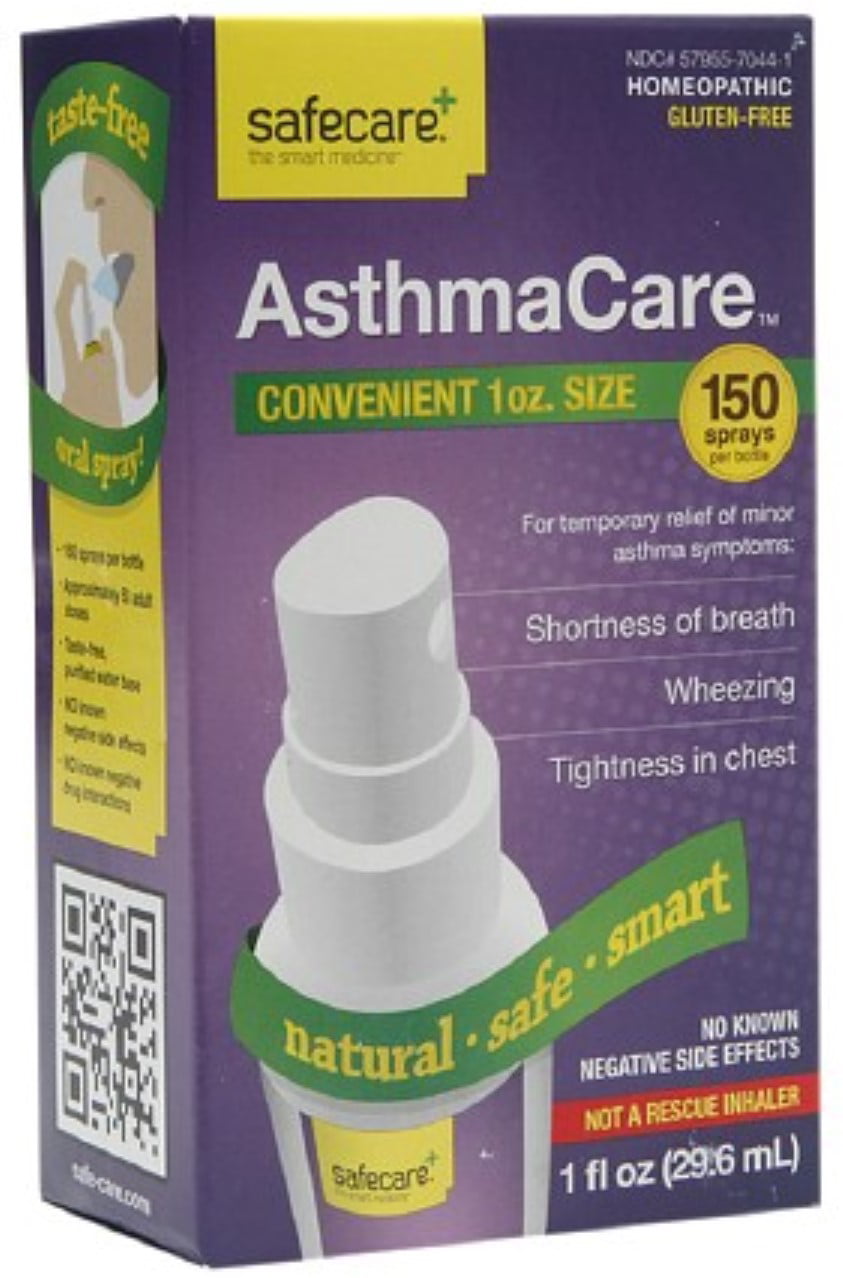 It depends on the herb and dose you take. Be especially careful with herbs and supplements that contain ephedra or ephedra-like substances. These can cause dangerous spikes in blood pressure and have been linked to heart attack and stroke. Examples include ma-huang (banned in the United States) and bitter orange.
It depends on the herb and dose you take. Be especially careful with herbs and supplements that contain ephedra or ephedra-like substances. These can cause dangerous spikes in blood pressure and have been linked to heart attack and stroke. Examples include ma-huang (banned in the United States) and bitter orange. Asthma. In: Integrative Medicine. 4th ed. Elsevier; 2018. https://www.clinicalkey.com. Accessed Sept. 18, 2020.
Asthma. In: Integrative Medicine. 4th ed. Elsevier; 2018. https://www.clinicalkey.com. Accessed Sept. 18, 2020.